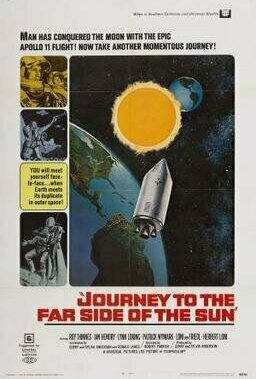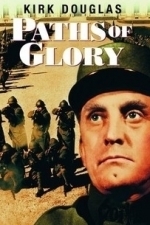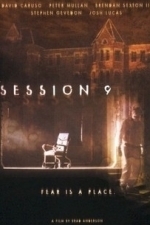Search
Search results
Awix (3310 KP) rated Doppelganger (1969) in Movies
Apr 12, 2020
Thunderbirds and Captain Scarlet creator Gerry Anderson turned down Stanley Kubrick's offer of the chance to do the model effects for 2001: A Space Odyssey, but jumped at the chance to do his own space adventure film a couple of years later. The good news is that all the model-making and visual-effects skill of the operation that Anderson had put together by the late 1960s is on display in this movie. The bad news is that Anderson and his wife wrote much of the script themselves, resulting in a plodding movie which focuses on all the wrong details instead of telling a compelling story.
The problem is that the basic idea - space mission discovers a replica counter-Earth - isn't properly developed, and the characters take nearly an hour to get there, let alone work out where they've ended up. The generally dour tone and rambling metaphysics would become more prominent in future Anderson shows (much of the supporting cast of this film turn up playing regular roles in UFO), but this first effort with live actors is lumpy and frustrating to watch.
The problem is that the basic idea - space mission discovers a replica counter-Earth - isn't properly developed, and the characters take nearly an hour to get there, let alone work out where they've ended up. The generally dour tone and rambling metaphysics would become more prominent in future Anderson shows (much of the supporting cast of this film turn up playing regular roles in UFO), but this first effort with live actors is lumpy and frustrating to watch.
Michael Korda recommended Paths of Glory (1957) in Movies (curated)
JT (287 KP) rated Session 9 (2001) in Movies
Mar 10, 2020
Looking back I’ve written a number of horror film reviews which, probably highlights what my favourite genre is? I’ve not been into torture porn or serious amounts of gore. I don’t mind it in small doses, but I prefer films that get under your skin – case in point, Session 9.
In order to satisfy the millennials the majority of horror films today get their thrills from cheap jump scares. But real terror comes from the things that we can relate to. Things that go ‘bump‘ in the night or the sense that we are being watched. This for me, is real terror. Directed by Brad Anderson, Session 9 embodies all of that to perfection.
Despite being made in 2001 and with a low return at the box office, it has been able to creep out audiences years later.
An asbestos cleaning crew are set the task of clearing the abandoned Danvers State Hospital, a job that needs to be done within a week. Company owner Gordon (Peter Mullan) has put a lot of pressure on his team, consisting of Mike (Stephen Gevedon), Phil (David Caruso), Hank (Josh Lucas), and Jeff (Brendan Sexton III), to meet the deadline and collect a bonus. It’s pressure that starts to spill over right from the off.
The hospital is creepy as hell and even in the daylight the crew are plunged into darkness, which doesn’t sit well with Jeff who has a serious case of nyctophobia. They also have to deal with in-fighting amongst the group. On top of the tight deadline Gordon is struggling with the stress of raising a newborn child and arguments with his wife have not helped matters and slowly he becomes dissociated from the group. Meanwhile Mike stumbles across some tapes (nine of them) which are session interviews with a former patient called Mary Hobbes who has multiple personalities, that over the course of each session start to come out.
Phil (David Caruso) & Jeff (Brendan Sexton III) investigate the depths of the hospital
Like Stanley Kubrick’s The Shining – the location starts to take hold of each of the men, sending them spiraling into a world of personal madness. A number of subplots become interconnected the longer the film goes on and the pacing, while slow for some horror fans, is brilliantly orchestrated for those with patience. Despite being made in 2001 and with a low return at the box office, it has been able to creep out audiences years later.
What makes the film even more terrifying is the setting. The film was shot in the actual Danvers State Hospital so it needed little doing to it in terms of effects. The hospital was said to be the birth place of the prefrontal lobotomy (something which is referenced in the film), and part of me thinks that the fear on the actors faces as they walk the halls was in fact genuine terror. If that is the case then it only adds to the horror.
Session 9 will stay with you long after the credits. It doesn’t rely on heavy gore or CGI and builds tension with what you think you can see and at times – what you can’t.
In order to satisfy the millennials the majority of horror films today get their thrills from cheap jump scares. But real terror comes from the things that we can relate to. Things that go ‘bump‘ in the night or the sense that we are being watched. This for me, is real terror. Directed by Brad Anderson, Session 9 embodies all of that to perfection.
Despite being made in 2001 and with a low return at the box office, it has been able to creep out audiences years later.
An asbestos cleaning crew are set the task of clearing the abandoned Danvers State Hospital, a job that needs to be done within a week. Company owner Gordon (Peter Mullan) has put a lot of pressure on his team, consisting of Mike (Stephen Gevedon), Phil (David Caruso), Hank (Josh Lucas), and Jeff (Brendan Sexton III), to meet the deadline and collect a bonus. It’s pressure that starts to spill over right from the off.
The hospital is creepy as hell and even in the daylight the crew are plunged into darkness, which doesn’t sit well with Jeff who has a serious case of nyctophobia. They also have to deal with in-fighting amongst the group. On top of the tight deadline Gordon is struggling with the stress of raising a newborn child and arguments with his wife have not helped matters and slowly he becomes dissociated from the group. Meanwhile Mike stumbles across some tapes (nine of them) which are session interviews with a former patient called Mary Hobbes who has multiple personalities, that over the course of each session start to come out.
Phil (David Caruso) & Jeff (Brendan Sexton III) investigate the depths of the hospital
Like Stanley Kubrick’s The Shining – the location starts to take hold of each of the men, sending them spiraling into a world of personal madness. A number of subplots become interconnected the longer the film goes on and the pacing, while slow for some horror fans, is brilliantly orchestrated for those with patience. Despite being made in 2001 and with a low return at the box office, it has been able to creep out audiences years later.
What makes the film even more terrifying is the setting. The film was shot in the actual Danvers State Hospital so it needed little doing to it in terms of effects. The hospital was said to be the birth place of the prefrontal lobotomy (something which is referenced in the film), and part of me thinks that the fear on the actors faces as they walk the halls was in fact genuine terror. If that is the case then it only adds to the horror.
Session 9 will stay with you long after the credits. It doesn’t rely on heavy gore or CGI and builds tension with what you think you can see and at times – what you can’t.
BankofMarquis (1832 KP) rated Paths of Glory (1957) in Movies
Feb 18, 2024
Early Kubrick Masterpiece
Dore Schary, then head of production of MGM, like Stanley Kubrick’s first film, THE KILLING (1956) so he hired Kubrick to develop film stories from the studios pile of scripts and purchased novels. Finding nothing the he liked, Kubrick remembered reading Humprhey Cobb’s anti-war novel PATHS OF GLORY and suggested that. Schary (like every other studio exec in Hollywood at the time) turned down the opportunity to make this bleak anti-war film.
When Schary was fired by MGM, Kubrick went to Kirk Douglas (who liked THE KILLING as well and was anxious to work with Kubrick). Using his clout as one of the Major Stars of Hollywood at the time, Douglas got United Artists to agree to make the picture.
Starring Douglas, PATHS OF GLORY tells the WWI tale of a group of soldiers who mutiny when asked to take on a suicide mission to take the impregnable “ANTHILL”.
In this film, Kubrick starts to come into his own as a unique and visionary filmmaker who would insist on take after take until he got the exact shot he was looking for.
The highlight of the film is the 5 minute tracking shot of the troops attacking the Anthill, a tracking shot that films such as SAVING PRIVATE RYAN and 1917 owe a debt to. It is a masterclass of filmmaking from Kubrick.
As for Douglas – who was also used to having complete control of his films – PATHS OF GLORY was a battle of wills between Kubrick and Douglas with each man coming out on top (at times)…to the betterment of the film.
On the acting front, Douglas has never been better as the Commander of the unit that has the mutiny and who decides to defend the soldiers who are on trial for mutiny and cowardice and who quickly realizes that the trial is a sham and that there is no way for him these soldiers to get a fair trial.
Adolph Menjou (the 1937 version of A STAR IS BORN) and George Macready (GILDA) are appropriately blustery and out-of-touch as the Senior Officers who give (and then defend) their impossible orders. Richard Anderson (Oscar in the SIX MILLION DOLLAR MAN) is slimey and slippery as the prosecuting attorney (who knows that the outcome of the trial is a done-deal) while Ralph Meeker (THE DIRTY DOZEN), Joe Turkel (the bartender in THE SHINING) and Timothy Carey (who famously clashed with Kubrick during filming in a calculated attempt to get some publicity for himself and was subsequently fired from the film) are the unfortunate 3 who are put on trial as representatives of their troops while the outstanding performance in this film is fomer child actor Wayne Morris (KID GALAHAD) as drunken Lt. Roget.
Even though this film is about ½ war battle film and ½ a court-room drama, it is the visuals of the folly of war that will stick with the audience long after it is over…and stick with it it does as this film was selected for preservation in the United States Film Registry in 1992 and is still listed in IMDB’s TOP 100 Rated films.
Letter Grade A-
8 stars (out of 10) and you can take that to the Bank(ofMarquis)
When Schary was fired by MGM, Kubrick went to Kirk Douglas (who liked THE KILLING as well and was anxious to work with Kubrick). Using his clout as one of the Major Stars of Hollywood at the time, Douglas got United Artists to agree to make the picture.
Starring Douglas, PATHS OF GLORY tells the WWI tale of a group of soldiers who mutiny when asked to take on a suicide mission to take the impregnable “ANTHILL”.
In this film, Kubrick starts to come into his own as a unique and visionary filmmaker who would insist on take after take until he got the exact shot he was looking for.
The highlight of the film is the 5 minute tracking shot of the troops attacking the Anthill, a tracking shot that films such as SAVING PRIVATE RYAN and 1917 owe a debt to. It is a masterclass of filmmaking from Kubrick.
As for Douglas – who was also used to having complete control of his films – PATHS OF GLORY was a battle of wills between Kubrick and Douglas with each man coming out on top (at times)…to the betterment of the film.
On the acting front, Douglas has never been better as the Commander of the unit that has the mutiny and who decides to defend the soldiers who are on trial for mutiny and cowardice and who quickly realizes that the trial is a sham and that there is no way for him these soldiers to get a fair trial.
Adolph Menjou (the 1937 version of A STAR IS BORN) and George Macready (GILDA) are appropriately blustery and out-of-touch as the Senior Officers who give (and then defend) their impossible orders. Richard Anderson (Oscar in the SIX MILLION DOLLAR MAN) is slimey and slippery as the prosecuting attorney (who knows that the outcome of the trial is a done-deal) while Ralph Meeker (THE DIRTY DOZEN), Joe Turkel (the bartender in THE SHINING) and Timothy Carey (who famously clashed with Kubrick during filming in a calculated attempt to get some publicity for himself and was subsequently fired from the film) are the unfortunate 3 who are put on trial as representatives of their troops while the outstanding performance in this film is fomer child actor Wayne Morris (KID GALAHAD) as drunken Lt. Roget.
Even though this film is about ½ war battle film and ½ a court-room drama, it is the visuals of the folly of war that will stick with the audience long after it is over…and stick with it it does as this film was selected for preservation in the United States Film Registry in 1992 and is still listed in IMDB’s TOP 100 Rated films.
Letter Grade A-
8 stars (out of 10) and you can take that to the Bank(ofMarquis)


